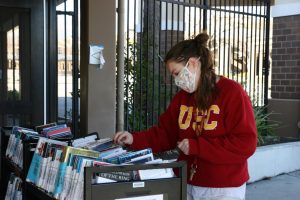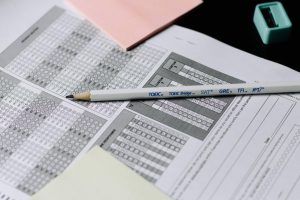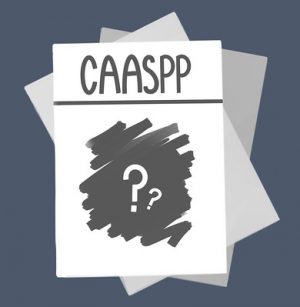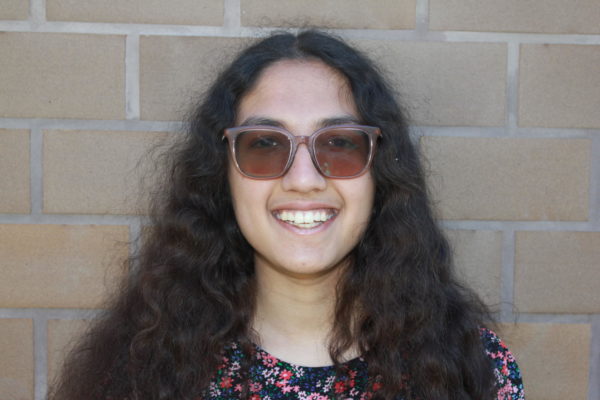Teachers adjust to in-person test-taking following online school
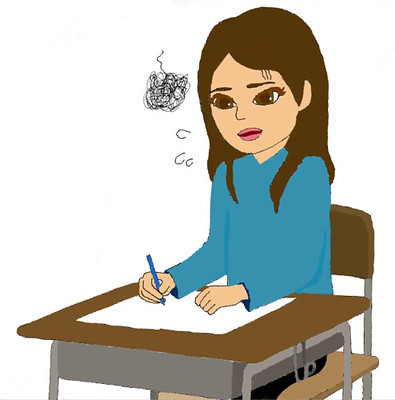
Students take their first tests in-person on paper after spending a year in online school.
September 29, 2021
As Dougherty Valley High School transitions from remote learning to in-person learning for the upcoming school year, students and teachers adjust to changes in conducting assessments.
The differences between the 2020-21 school year and the upcoming year have led teachers to deal with the aftermath of “Zoom school,” as they tackle issues such as cheating, learning gaps and a lack of collaboration with other students.
Test platforms in online learning vs in-person school
Online school drastically affected how students were taught concepts in class, as teachers introduced new technologies for test-taking and learning.
English teacher Susannah Faria currently gives out paper tests and has completely avoided using online platforms, enjoying the connections with students that in-person learning allows.
“I think things have gotten a lot better in-person. I think working on tests with pen and paper have helped to cement knowledge, at least that’s what kids have told me,” Faria said.
The format of tests changed drastically in an online environment. For Faria, she was unable to depend on paper tests and had to resort to a different testing platform as well as changes in the content of assessments.
“It was difficult because tests almost always had to be multiple choice, and you didn’t know if they were using their own materials,” she said. “So I wrote the test on Google Forms and allowed them [students] to use their notes.”
Faria often tests students on reading comprehension and requires them to read a passage, chapter or novel prior to the assessment. However, due to quarantine, some students lacked a paper copy of their book.
“If you have trouble reading and understanding what you’re reading, you need to annotate and mark what you’re reading with a pen and pencil. So I really encourage students to buy their own copy so that they can mark it up,” she explained.
Algebra II teacher Jill Assefa has also transitioned from using an online platform called GoFormative to conducting assessments with pen and paper this year. GoFormative is an online platform that allows teachers to easily create digital assessments and was popular among teachers during the virtual school year.
“We used GoFormative for all of our tests, and the platform was really good about improving their user interface, making it easier as the year progressed,” Assefa explained. “In the beginning, they [the platform] didn’t even have math types in their whiteboard portion, but it had a unique ability to allow students to show their work on the whiteboard. After all, I don’t grade their final answer, I grade their work.”
However, students’ success for these tests depended greatly on how easily they were able to adapt to the new online learning environment and changes in writing answers.
“They [the assessments] tested the students’ ability to type, and this was a struggle,” Assefa said. “For some students, it was very easy and for others it was very difficult.”
Biology teacher Carol Quach was also able to adapt well to GoFormative for her quizzes and tests. She plans on continuing with proctored GoFormative tests for in-person learning this year due to its advantages over paper assessments.
“I liked doing the online tests because it was easier for me to analyze the data of students’ progress,” Quach said. “I could see which questions students had collectively missed and which ones I had to go over again. That’s something you just can’t do on paper, as you lack the actual real data.”
Cheating in Online School Leads to Online Learning Gaps
Due to the nature of online tests, teachers are unable to detect whether a student uses their notes, websites or other study materials during assessments. This enables cheating to become more rampant, as students are unlikely to get caught in the act, compared to in-person school, where teachers could notice students peeking over their peers’ papers or hiding notes.
Assefa explained, “I keep on trying to tell them [my students] that if you cheat, and you’re in Algebra II, you’re probably going to Precalculus next year. And you’re expected to know all of these concepts, so you’re really hurting yourself.”
Another reason why cheating is more prevalent online is the mental struggles of remote education. According to a CDC study published in March 2021, about 25% of parents reported that their children’s mental or emotional health has worsened, and nearly 63% of parents reported a decrease in physical activity.
“There’s a lot of students under a lot of pressure in our school,” Assefa said. “They’re just high school students, but they’re in their rooms alone. To put that huge decision on a student’s plate, I understand the pressure that some students might feel. Since their parents want them to get an A and no one’s watching them, they might feel that no one will see them cheating.”
The rise in cheating cases and the effect of “Zoom school” on mental health has led to heightened learning gaps during online learning. A study from McKinsey & Company shows that on average, K-12 students are five months behind in math and four months behind in reading due to the impact of the COVID-19 pandemic. Both reading and math directly build on fundamental concepts and standards from previous years, and students use these prerequisites to make sense of new topics.
Quach explains how she is adjusting her curriculum to account for any learning gaps that students may have.
“This year, as freshman biology teachers, we’re trying to be more lenient. Since exams were completely open book last year, we’ve started the year with three open-note quizzes. However, the first unit quiz that we’ll be having will not be open-note and will have normal guidelines,” she said.
Quach hopes to ease students into Biology, teaching them the middle school basics and slowly reaching more difficult concepts, explaining that they “have to take off those training wheels at some point and learn.”
Philip Nho, a teacher of advanced courses such as Honors Precalculus and AP Calculus BC, faces different issues from Quach. Nho cannot slow down the curriculum, yet also has students who have learning gaps from remote learning.
“With remote learning, the effects of trying to rush through the math material has really intensified,” he said. “I’m seeing that overall there have been more fundamental math gaps than I think I’ve ever seen before in my eight years of teaching.”
To combat this, Nho is using successful remote learning methods, such as a YouTube channel he started during online school that students can use as a supplemental resource for help. He also is available during access periods to provide support for students, and recommends academic peer tutoring.
“All you can do is just give them [students] the support they need,” Nho said. “My job as a teacher is to meet the students at the skill level they’re at, and to prepare them for the future.”
Looking Forward for the Upcoming School Year
Despite the shortcomings of online learning, many teachers and students alike are optimistic about in-person learning.
Assefa explains that she has seen more students favor paper and pencil tests compared to online tests.
“In the beginning of the year, I asked students to raise their hands if they wanted paper tests, notes and homework. And everybody raised their hands, since nobody really wanted to go back to virtual,” she said.
Assefa has also enjoyed organizing group review activities before tests that allow students to collaborate with one another.
“One activity I love doing is grudgeball,” she said. “It’s a review activity that we do in teams, and we also use a basketball hoop to score points whenever a student gets the right answer. It’s fun!”
Quach is similarly adjusting to school changes and is excited to be conducting scientific labs for different topics in biology.
“We had this lab where students would be playing with water by interacting with it in class. Last year, we weren’t able to learn about the properties of water since I couldn’t conduct the lab online. It feels like things are getting back to normal,” she said.
Nho is working with students to ensure that they receive the support that they need and have a smooth transition to in-person classes.
“We’re still not exactly the way it was before, but it definitely feels more normal than it did a year ago,” Nho said. “The big thing is just giving students enough opportunities as much as I can to engage with each other and to be in a classroom again.”


